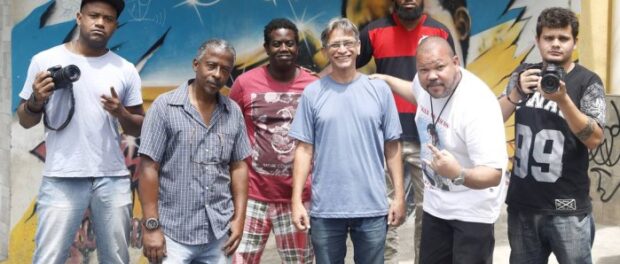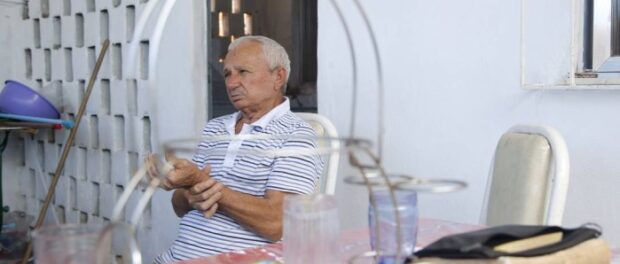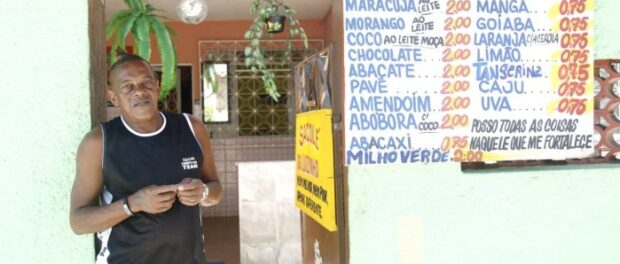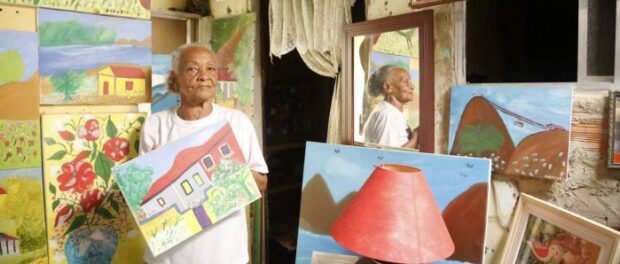
For the original article by Carolina Callegari in Portuguese published in O Globo click here.
In December 1964, the project that included the creation of a new neighborhood in the West Zone between Largo da Freguesia and Barra da Tijuca was approved. The first landscaping works began in February, slowly shaping what would later become City of God. Leonardo Silva, originally from Paraíba, arrived to the city around this time from João Pessoa to work as a builder. At 25, he didn’t imagine that he would build the house where he would live for the next 50 years. Silva is one of the main characters in the film CDD 50 Anos (50 Years of City of God), which has been in production since 2011 and is scheduled for release this year.
City of God was financed by the National Housing Bank (BNH) and built by the Popular Housing Company (Cohab). It was part of the remodeling policy of what was then the state of Guanabara, headed by Sandra Cavalcante, State Social Services Secretary for Governor Carlos Lacerda. The urban layout integrated homes with sports and leisure areas, such as squares, commerce, and schools–all necessary for a functioning neighborhood. The water and sewerage networks and the paved streets were completed before the delivery. After the flood of January 9, 1966, which caused the deaths of 200 people and left over 30,000 homeless in different parts of the city, the homes which before were intended for workers employed in the Barra area were rapidly occupied by a population originating from 63 communities, based on an emergency plan. The subsequent floods continued to contribute to the disorderly occupation of City of God, distorting the original plan by architect Guiseppe Badaloto.
“The entire plan was for a modern neighborhood. When it was designed, it was supposed to be a supporting neighborhood for Barra, supplying labor,” explained the architect. “City of God was created to be divided into blocks, like a condominium community. After, it became a place of invasion, growing abruptly, and the empty areas were irregularly occupied. There should have been an initiative to adapt the families to the new space. The government came along with a different social philosophy; the issue was simply putting people in houses. A continuation of the work was needed.”
The plan may not have been strictly followed, but residents say that City of God is a good place to live. Although located in an area that is constantly expanding, the community of over 47,000 inhabitants–according to the 2010 Census–keeps customs alive that have vanished from other areas of the city, such as chats between neighbors at the front door, shopping in cars that pass by selling fruits and vegetables advertised through loudspeakers, and greetings on every street corner exchanged between the familiar old folks, always using childhood nicknames. It was in City of God that Leandro Silva decided to put down roots along with his wife, Maria Silva, and raise five children, all residents of the area. Nearing their 50th wedding anniversary, the two explain why they live, until today, in the house they moved to in 1966 after getting married.
“One of Maria’s aunts was already living here and when the flood happened, she told us that people from other communities were occupying the houses. We came to this one, which we were already planning on buying. We arrived and the following day we went to Centro to register the property. There were few people living here. The water from the river was clean and good. There was no sewerage system and no roads leading to Barra. I know a lot of people here. I never had any problems,” said Silva, who is now 76 years old.
His wife, 73, known as Maria Costureira (Seamstress Maria) because of her profession, added, “I like it here. I live near my children and grandchildren. People respect me, as I’m one of the eldest. I love my home. City of God is my family; wherever I go, people know me.”
The perspective of those who have lived and experienced the changes in the neighborhood over time is the basis for the narrative of CDD 50 Anos (City of God 50 Years), now being managed by only one of its creators, Pedro Silva. The other, Julio Pecly, passed away last year. Threading together statements by residents, the documentary seeks to retell the local history and focus on the daily routine beyond the scenario of violence that was highlighted in the film City of God by Fernando Meirelles and Kátia Lund released in 2002.
Far from wanting to camouflage the troubled past of the community, today occupied by a Pacifying Police Unit (UPP), the new film seeks to retell other stories experienced over five decades, such as the emergence of prolific cultural production. Film students from PUC-Rio–Sergio Leal, Mateus Paz, and Bruno Rafael–and the founder of the film collective CDD na Tela (City of God on the Screen), Igor Melo, participate in the project. The actor Leandro Firmino, who played Zé Pequeno in the film by Meirelles and Lund, does the job of guiding viewers through another City of God.
“You can tell it has gone through a number of changes, although some problems are still around. It’s very different today than it was in my childhood. Not to be disparaging towards other communities, but City of God is way ahead in terms of infrastructure and social and cultural movements. Whenever I can, I try to find out what’s going on. It’s been 50 years of the survival and struggle of the community,” says Leandro, who has lived in a community in São Gonçalo since he got married two years ago.
Cultural Production
CDD 50 Anos sets out to tell the local history through characters who are in the memory and imagery of City of God. Originally from Realengo, Luiz Barros Afonso, or Luizinho, is one of them. He came to the community at three years of age with his parents and brother in 1966, due to the flood. In the 1980s, he began to get involved in music and worked on dubbings of Michael Jackson. In the following decade, he started organizing parties in City of God.
“I used to go to parties in Caxias, Rocha Miranda, and Piedade. In the 1980s we didn’t have parties around here because of the rivalry between [criminal] groups. When I started hosting events, I brought musicians. The events became hugely successful featuring successful artists from here like MV Bill and Cidinho and Doca,” said Luizinho.
The home of Anahyde dos Santos Muniz, also known as Tuca, is filled with colorful paintings that cover the unfinished walls. The poet, singer, songwriter, and actress, who always has a song at the tip of her tongue, is another known figure featured in the documentary. She arrived in 1975 after a storm knocked down her home in Rio Comprido. Tuca is part of the theater company from the Youth Reference Center (CRJ) and also belongs to Poesia de Esquina (Street Corner Poetry), a community poetry project. At 82, she still dreams of one day recording an album.
“The songs come to me naturally. I create them in my sleep. As soon as I wake up, I write them down. I was a singer in a carnival parade and at a samba school, and even won the award for best interpretation and best composition at the Favela Festival,” she said.
Education, sports, and the arts are encouraged at the Youth Reference Center (CRJ) through courses and workshops for different age groups. More than revealing new community talents, the center strives to get people away from violence through social integration initiatives. Cinema in particular, which brought City of God to the world, is one of the most sought after courses by young people through the CDD na Tela (City of God on the Screen) project, which offers classes in theater, acting, and video production.
Paulo Silva, a resident of the neighborhood and active in the area since the 1990s, highlights the local production: “City of God always had a cultural movement, even during the worst of times. In the 1970s, for example, a movement which Paulo Lins [author of the book City of God on which the film is based] was part of had a film club. And, when funk took off, here it was already old,” he said.
It was the work in cinema that helped actor and screenwriter José Antônio Silva, or Zezé, to escape crime. After serving time for robbery, he joined the Boca de Filme project, created in 2002. Time spent in prison was transformed into inspiration for the short film “Arroz com feijão” (“Rice and Beans”), part of the fiction film 5 x Favela: Now By Ourselves, released in 2010.
“I watched City of God and felt like I was watching myself. When Boca de Filme came along, I spoke with the coordinator and said I was involved in crime, but was looking for an opportunity. Then I wrote my first script, joined Nós do Morro, and began acting,” said Zezé.
With stories like Zezé’s, the producers want to show the story of overcoming difficulties through culture, beyond the boundaries of City of God. And as Sergio Leal, also known as DJ TR and who also takes part in the documentary’s production, puts it: “We want to broaden the meaning of City of God. We want to show that this is not a factory of bad things, that the community has its problems but that it doesn’t cower before them.”



